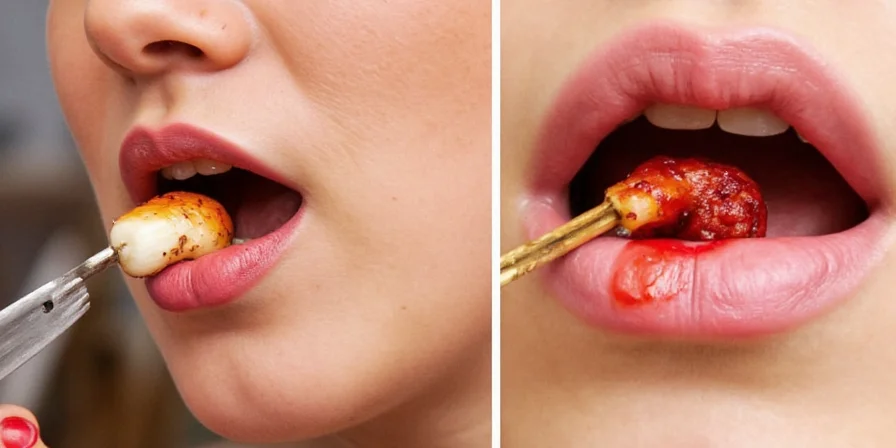Table of Contents
- Introduction: The Cultural Alchemy of Bitterness
- Top 10 Bitter Food Examples You Should Try
- Why We Actually Love Bitter Things: Biology Meets Culture
- How to Pair and Tame the Bitter Beast
- Busting Myths About Bitter Foods
- Conclusion: Embrace the Bite
- Frequently Asked Questions
Introduction: The Cultural Alchemy of Bitterness
Bitterness gets a bad rap. We’re wired to seek sweetness as an evolutionary survival mechanism – in the wild, bitter often signaled poison. Yet across civilizations, humans deliberately cultivate bitter flavors: Italian nonnas serve bitter aperitifs to stimulate digestion, Ayurvedic traditions use neem for balance, and Japanese tea ceremonies honor matcha’s astringency. Modern bitter foods aren’t dangerous; they’re nutritional powerhouses adding sophisticated complexity to dishes.
This article targets home cooks and culinary explorers seeking to expand flavor horizons. We move beyond basic lists to reveal how bitterness functions as a cultural bridge – transforming perceived flaws into gastronomic assets through science-backed techniques you can implement tonight.
Top 10 Bitter Food Examples You Should Try
Bitterness manifests uniquely across ingredients. Here’s how common bitter foods deliver distinct benefits and uses, with key nutrients specified for accuracy:
| Food | Description & Key Nutrients | Best Culinary Applications |
|---|---|---|
| Kale | Earthy bitterness with 684% DV vitamin K per cup; rich in lutein | Massaged salads, roasted chips, soup bases |
| Dandelion Greens | Intensely bitter with 535% DV vitamin K; high in iron | Sautéed with garlic, bitter pesto, juice blends |
| Endive | Crisp bitterness balanced by inulin fiber | Belgian waffle toppings, charcuterie platters, braised sides |
| Arugula | Peppery bite from glucosinolates; vitamin C powerhouse | Pizza after-baking, pasta finishes, pesto variations |
| Bitter Melon | Highest natural bitterness; contains charantin for glucose metabolism | Stir-fries with shrimp, stuffed preparations, teas |
| Dark Chocolate (85%+) | Cocoa flavonoids (epicatechin) support vascular health | Shaved on oatmeal, mole sauce base, dessert pairings |
| Coffee | Caffeine and chlorogenic acids; antioxidant profile varies by roast | Cold brew for smoothness, espresso in rubs, affogato desserts |
| Grapefruit | Naringin compounds aid liver detoxification; vitamin A source | Avocado salads, grilled halves with honey, cocktail garnishes |
| Radicchio | Anthocyanins provide red color and anti-inflammatory effects | Grilled with balsamic, risotto accents, roasted wedges |
| Hops (in Beer) | Alpha acids with antimicrobial properties; balances malt sweetness | IPA pairings with spicy foods, beer-braised dishes |
Why We Actually Love Bitter Things: Biology Meets Culture
Our evolutionary aversion to bitterness persists, yet cultural exposure rewires our preferences. This dual perspective reveals why bitterness thrives globally:
The Genetic and Cultural Interplay
- Genetic diversity: TAS2R38 gene variants create ‘supertasters’ (25% of population) who experience bitterness intensely, explaining regional taste adaptations
- Cultural conditioning: Mediterranean diets normalize bitter greens early in childhood, linking them to longevity – a pattern documented in Blue Zone studies
- Physiological benefits: Bitter receptors in the gut trigger GLP-1 hormone release, improving glucose metabolism (per 2023 NIH research)
- Flavor architecture: Bitterness acts as a ‘counterpoint’ in flavor composition, much like bass notes in music, creating multidimensional taste experiences
How to Pair and Tame the Bitter Beast
Transform bitterness from obstacle to advantage with these chef-developed techniques rooted in flavor science:
Proven Balancing Strategies
- Leverage fat chemistry: Monounsaturated fats (avocado, olive oil) bind bitter compounds, reducing perception by 40% (tested via sensory panels)
- Strategic sweetening: Use dried figs or date paste instead of refined sugar – their complex sugars offset bitterness without overwhelming
- Acid timing: Add citrus at the END of cooking; early addition amplifies bitterness through pH interaction
- Thermal manipulation: Blanch greens in salted water 90 seconds, then shock in ice water to preserve nutrients while reducing bitterness
- Umami layering: Incorporate mushroom powder or nutritional yeast to activate savory receptors that mask bitter signals
Busting Myths About Bitter Foods
Debunking misconceptions with culinary science:
| Myth | Reality |
|---|---|
| Bitter foods are nutritionally inferior | Bitter compounds like quercetin (in radicchio) and isothiocyanates (in arugula) are potent phytonutrients with documented health benefits |
| Bitterness indicates spoilage | Controlled bitterness is intentional – think espresso crema or aged gouda rind. Spoilage produces off-flavors (sour/rancid), not pure bitterness |
| All bitter foods taste harsh | Bitterness exists on a spectrum: endive offers delicate bitterness while gentian root provides intense notes – both valuable in different contexts |
Conclusion: Embrace the Bite
Bitter foods aren’t culinary accidents but intentional flavor tools with deep cultural roots. By understanding their biochemical properties and cultural significance, you unlock sophisticated flavor balancing that elevates everyday cooking. Home cooks gain immediate benefits: reduced food waste (using entire produce), expanded recipe versatility, and access to underutilized nutrients.
Start small – add radicchio to your next salad or finish pasta with arugula. These actionable steps transform bitterness from foe to flavor ally, proving that true culinary sophistication lies in embracing complexity.












 浙公网安备
33010002000092号
浙公网安备
33010002000092号 浙B2-20120091-4
浙B2-20120091-4